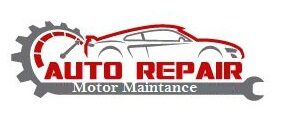With a view to optimizing the costs of your fleet and equipping it with vehicles that will be the most profitable and robust possible, it is essential to define all the rules and all the selection criteria for your company in advance and your collaborators. In the field of fleet management, this is the internal automobile policy , better known as the Car Policy , a reference document for the automobile fleet manager.
The development of this car charter is an essential strategic step for the company in terms of fleet management. It determines and frames all the rules for the choice and use of vehicles specific to your company. Thus, the Car Policy identifies the responsibilities of the company, the rights or obligations of employees, the authorized brands and models, etc.
To set up an effective Car Policy, there is a universal rule: select the best models, at the best price and with an optimal residual value . Defining these parameters will allow you to optimize your TCO and therefore, more generally, the cost of your fleet. To ensure this, it is recommended that you update your Car Policy once or twice a year. Also, due to the laws that have come into force such as the mobility law ( LOM ) and the WLTP standard , it is important to check the vehicles that you will integrate into your fleet in terms of C02 emissions.
Control your park
To keep an eye on your vehicle fleet and control its cost, it is essential to set up a dashboard made up of key indicators. Here is the list of the main ones that will be useful in the daily management of your car fleet:
The TVS ( Tax on Company Vehicles ). This is the tax that a company must pay , each year, for each vehicle. The calculation of the TVS is based on 2 elements, the CO2 emission rate of the vehicle or its fiscal power (depending on the date of entry into service of the vehicle concerned) , and the emissions of atmospheric pollutants linked to the fuel of the vehicle, calculated according to the date of its release.
The TCO ( Total Cost Ownership or total cost of ownership ). This involves calculating and analyzing the actual cost of purchasing or leasing a vehicle from the supplier. This amount includes all the costs of ownership and use , direct and indirect (or hidden costs) , associated with a vehicle throughout its life cycle.
The PRK (Cost Price per Kilometer). This indicator makes it possible to compare vehicles and to take a decision during a first rental or a renewal on a common basis of calculation. It is also a question of observing the profitability of a vehicle model and thus controlling the cost of the vehicle fleet. This calculation takes into account fixed costs (financing, circulation, insurance, maintenance, etc.) and variable costs (fuel, maintenance products, consumables, etc.) .
CO2 emissions . The current trend in the automobile market is towards the greening of fleets to limit the impact of vehicles on the environment. The LOM law and the WLTP standard came into force to regulate vehicle fleets and force companies, in particular, to reduce their CO2 production. In this way, it is imperative to follow this data, not only to respect the laws and emission thresholds determined by the Ministry of Ecology but also to avoid excessive expenses relating to taxes.
The traffic law . This is the basis of a vehicle rental agreement. The manager commits to a duration/distance couple when placing an order with his rental company. Depending on the use of the vehicle and the journeys made by your employee, these theoretical data are not necessarily respected. In the event of under-traffic, the rent will be too high in relation to actual consumption and, conversely, in the event of over-traffic, the price of the rent can quickly increase. Monitoring and controlling this information is therefore essential to optimize the rolling law and achieve savings .
Added to this list are all the other expenses involved in the life cycle of a vehicle such as fuel, maintenance, costs related to the vehicle or the driver. These are the regular fees that should be taken into account and closely monitored to avoid unnecessary and excessive expenses.
The efficiency of your fleet management will therefore depend on the strategy implemented and the equipment of the fleet manager. It is therefore essential to put the odds on your side to ensure optimal fleet management.
Do you need advice on how to manage your vehicle fleet? Do not hesitate to contact us, all GAC Technology teams are at your disposal.
Are you looking for a tool to help you on a daily basis? We invite you to download the product sheet of GAC Car Fleet, car fleet management software or to register to participate in a demonstration of our tool (free and without obligation) .




